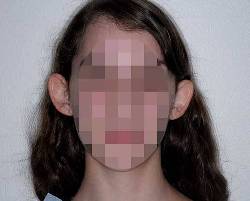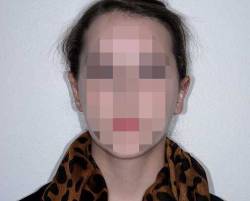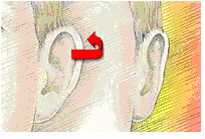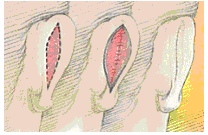What Is Otoplasty?
Otoplasty is a cosmetic procedure that can improve the appearance of ears. Ear surgery does not affect hearing but can improve the shape, size, or appearance of the ear. Typically, patients with large, protruding ears undergo otoplasty to pin the ears back or reduce their size.
Am I A Good Candidate For Ear Surgery?

- Protruding ear(s)
- Large ear(s)
- Abnormally shaped ear(s)
Your Personal Consultation– How Will Dr. Barrera Evaluate Me for Aesthetic Ear Surgery?
You should come to the consultation prepared to discuss your medical history including previous surgeries, past and present medical conditions and current medications. It is important for you to provide complete information. High blood pressure, thyroid problems, diabetes, etc. should be reviewed as these medical conditions may increase some risks associated with ear surgery. Dr. Barrera will want to know if you have allergies.
During the initial consultation, you may be asked to look in a mirror and point out exactly what you would like to see improved. This will help your plastic surgeon to understand your expectations and determine whether they can realistically be achieved
In addition to being an expert in his field; Dr. Barrera has an overwhelming kindness and genuine concern for his patients. I wouldn’t consider seeing any other doctor!” -Catherine
Otoplasty (Ear Surgery) Photo Gallery


View Our Otoplasty (Ear Surgery) Gallery →
How Is Aesthetic Ear Surgery Performed
One of many surgical techniques may be suggested to improve the appearance of your ear(s). The particular technique Dr. Barrera recommends will depend on the nature of the problem and many other factors including your desires. Because of individual factors, not everyone will achieve the same results from ear surgery. Dr. Barrera will select the surgical technique that he or she feels will obtain the best outcome for you.
If your problem is protruding ears, the supporting tissue of the ears, called cartilage, is reshaped in order to position your ears closer to your head. This usually is accomplished through incisions placed behind the ears. Subsequent scars will be concealed in the natural skin crease. In some cases, especially in ears that need to be reduced in size or are protruding in the middle 1/3 of the ear, external incision of the front (outside surface) of the ear.
Usually these are placed in areas where they will heal in a more inconspicuous manner. In ear reductions, skin as well as cartilage will most often need to be removed.
Understanding Risks Of Ear Surgery
Fortunately, significant complications from aesthetic ear surgery are infrequent. Every year, many successful cosmetic ear surgeries are performed, without experiencing any major problem.

Sutures may be visible or may even break allowing for partial or complete recurrence of the protrusion and / or loss of the ear fold. Irregularities, sharp folds and other shape abnormalities may ensue. You can help minimize certain risks by following the advice and instructions of your plastic surgeon, both before and after your ear surgery.
Your Surgical Experience (Preoperative Preparation and Recovery)
Pre-Operative
The goal of Dr. Barrera and the entire staff is to make your surgical experience as easy and comfortable for you as possible. If you are a smoker, it is recommended to stop smoking well in advance of surgery since smoking can impair the healing process. Aspirin and certain anti-inflammatory drugs can cause increased bleeding, so you should avoid taking these medications for a period of time before surgery. Dr. Barrera will provide you with additional preoperative instructions.
Aesthetic ear surgery is usually performed on an outpatient basis. If this is the case, be sure to arrange for someone to drive you home after surgery and to stay with you for the next 24 hours.
The Day Of Ear Surgery
Dr. Barrera performs all aesthetic surgery procedures including otoplasty surgery at his Accredited Ambulatory Surgical Facility (AAAASF) under IV sedation and local anesthesia, without the need for general anesthesia (painless during the procedure and minimal pain afterwards). This provides added safety and faster recovery. Most patients are able to go home within an hour from the end of the 1 to 2 hour procedure with minimal discomfort.
There is surprisingly little discomfort, however, from the surgery, especially if the ears are in a head dressing. You probably will be permitted to go home after a short period of observation, although some patients may stay overnight in the hospital or surgical facility.
Recovery From Ear Surgery
It is important to realize that the amount of time it takes for recovery varies greatly among individuals.
The first several days you should maintain head elevation as much as possible. Remember, you must not take aspirin or certain anti-inflammatory medications.
Initially, pain is usually controlled with oral medication. Some patients find that mild swelling persist for many weeks. Bruising typically disappears within seven to ten days. Stitches are usually removed within a week of surgery.
After surgery, you may be instructed to wear gauze dressing or bandage for a few days or up to several weeks to ensure that your ears heal in their new, corrected position. Often a ski band to cover the ears is worn at night to prevent the ears from bending during sleep.
Straining, bending and lifting should be avoided during the early postoperative period. In many instances, you will be able to resume most of your normal activities within ten days or less. Most people return to work at 7- 10 days.
What Anesthesia Is Used?
We perform the otoplasty procedure with an IV Sedation and local anesthesia. Preventing you from feeling pain or discomfort during the procedure. The reduced pain after surgery allows for a faster recovery, whether you are going home or to a local hotel after the procedure. In addition to eliminating the chance of Deep Vein Thrombosis and Pulmonary emboli which can occur under general anesthesia with gases.
Results of Your Ear Surgery
Usually the final results of the ear surgery are very long lasting, as the ear doesn’t change like other body parts.
Schedule A Consultation
If you have questions about the otoplasty procedure, contact our office at (713) 468-5200 or request a consultation online.



